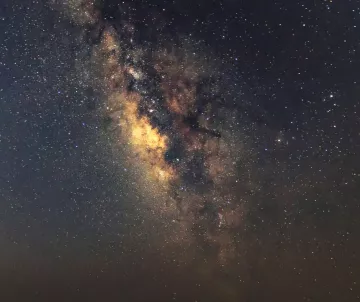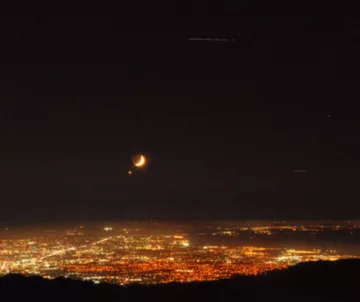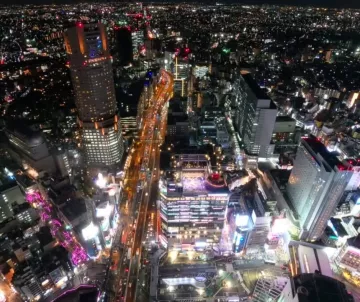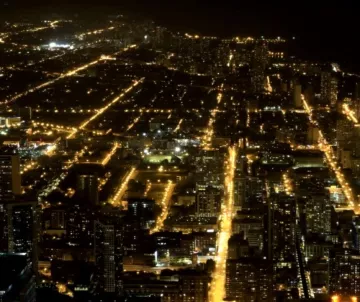Our shared legacy of the night sky

Life on Earth has a lot in common. Together we have evolved under consistent cycles of day and night. These rhythms are deeply intertwined with our most important behaviors and biological functions. Today, one thing which most living beings have in common is the loss of our dark sky. 80% of the world’s population lives under light-polluted skies, which is so extensive that the Milky Way, a band of white in our sky, remains hidden from more than one-third of humanity. The stars, which have inspired humans for generations and shaped our biology for far longer, have vanished.
What do we lose when we lose the night sky? The loss of beauty is itself worth mourning. Unfortunately, when we lose the night sky we lose a lot more than a muse; loss of the night sky is detrimental to our physical health and the health of our ecosystems.
The destructive power of artificial light at night (ALAN)

Cumulatively, the scale of ecological destruction wrought by artificial light at night (ALAN) is comparable in both severity and scale to the effects of climate change on ecosystems [citation]. ALAN affects a variety of key behaviors such as foraging and migration. Migratory birds are especially susceptible to sky glow, which can draw them from their migration routes, causing them to not mate or even die from exhaustion. Our West Coast migratory bird corridor, the Pacific Flyway, is impacted by such sky glow. Amphibians and bats are often particularly sensitive to light, and will avoid foraging in light-polluted areas. The flora and fauna of Bay ecosystems are not spared from the impacts of ALAN, which makes this a key issue for our Chapter’s Bay Alive Campaign. In human beings, exposure to ALAN has been correlated with increased risks of breast cancer, and in children has been shown to disrupt growth hormone production.
What causes light pollution? How can we prevent it?

Light pollution can be caused by the cumulative impacts of mismanaged lighting. Examples include buildings that keep their lights on long after they are needed, spotlights and upward facing lights, and lights that have been installed with a greater intensity than is necessary. Fortunately, the solutions to light pollution (often called “Dark Sky” policies) are straightforward. Below you can find how light pollution is created and how it can be remedied.
- Shielding
When bulbs are uncovered, they spill light onto surrounding properties (a process called “light trespass”) and into the sky. These “unshielded” lights are a major culprit of light pollution. The practice of up-lighting, or angling one’s lights upwards, contributes significantly to sky glow. The most egregious forms of up-lighting are spotlights, which can be devastating for birds, which are attracted to this light and can even be trapped in these beams of light, circling until they are exhausted or collide with other birds. The negative effects of unshielded light can be remedied by shielding the light bulb, directing the light downward.
- Intensity
LED light bulbs are far more energy efficient and powerful than previous bulb technology such as halogen lights. This efficiency and power has led to over-lighting, as it can be fairly easy to install bulbs that are much more powerful than the intended use actually requires. Fortunately, LED light bulbs come in a variety of different power levels and can sometimes be adjusted via software, making it easy to select the appropriate light intensity for a designated use.
- Color Temperature
Measured in units of Kelvin, the color temperature of lights can affect how biologically harmful the light is. The higher the color temperature number, the bluer the light is and the closer it is to sunlight. For example, cooler (bluer) light (3000+ Kelvin) has a much stronger negative effect on living beings than warmer (redder) colored lights (2700 Kelvin and below). Even in human beings, white light more significantly disrupts our circadian rhythm than red light. Keeping the color temperature of lights below 3000 Kelvin (ideally at or below 2700 Kelvin) is a good way to minimize the negative biological impacts of ALAN.
- Sensors and Timers
Artificial light at night should only be used when necessary, which can be greatly aided by the use of sensors and timers. Buildings with timed lighting can ensure that lights are not on long after working hours, or that shades are automatically drawn late at night if indoor lighting is being used. These tools allow properties to enact beneficial lighting practices without the need for constant memory and attention.
What Sierra Club is Doing to Curb Light Pollution

City and County governments can adopt Dark Sky Policies, which establish standards for lighting and include support for community members to be able to implement these standards. Your Loma Prieta Chapter is working smart to ensure that these simple remedies to light pollution are implemented in municipalities in our Chapter territory. Reducing light pollution in cities close to the Bay edge is a high priority for our Chapter, as the negative impacts of artificial light are strongly felt in Bay ecosystems.
In collaboration with the Santa Clara Valley Audubon Society, we have advocated successfully for Dark Sky Standards in Cupertino and in Sunnyvale’s Moffett Park Specific Plan. We are currently supporting Sunnyvale in developing a city-wide ordinance, as well as in Los Altos, Palo Alto and with the County of Santa Clara.
What can you do to help?
-
Learn from the experts
Sierra Club Loma Prieta Chapter’s Bay Alive Campaign has put together a comprehensive Dark Sky Webinar, featuring leading experts in light pollution who explained the problems of and solutions to artificial light at night in a straightforward way. The recording of this webinar is essential watching for anyone interested in learning more about the threats to the health of local humans and wildlife. - Support Dark Sky efforts
Loma Prieta Chapter staff and Bay Alive volunteers are available to assist you in influencing your city or county to enact a Dark Sky ordinance. We will educate you on the basic methods of environmental advocacy and support you in each step of your advocacy journey. No previous advocacy experience is needed.
- Use Dark Sky Techniques at home
Installing a new light bulb? By using Dark Sky techniques from this blog and from our Dark Sky Webinar, you’ll be able to ensure that you get the lighting you need without contributing to the overall problem of light pollution.
Restoring our Night Sky
For centuries the stars have inspired humanity’s scientists, artists and dreamers. Natural darkness has nurtured our biological development, along with those of the species with whom we share this earth. Every person deserves access to the wonders of the night sky, and every living being deserves the right to a healthy ecosystem. Together we can do our part to restore our access to the precious and essential cycles of natural light and dark that have regulated life on earth for millions of years.